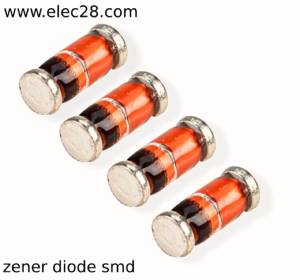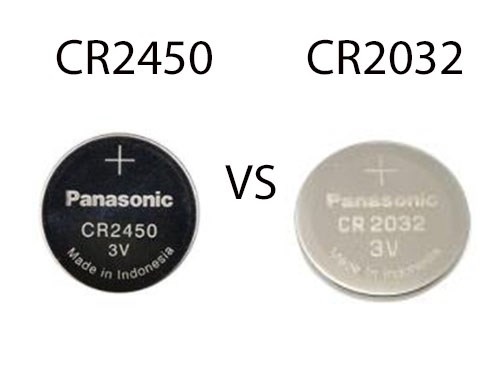
Efficient Voltage Regulation with SMD Zener Diode: A Quick Guide
What is a Zener Diode?
Definition and basic operation
When the breakdown voltage, sometimes referred to as the Zener voltage, is attained, a Zener diode is a semiconductor device made to function in reverse and keep a steady voltage between its terminals. Because of this special quality, zener diodes are perfect for protecting and regulating voltage in electrical circuits.

Characteristics and specifications
Sharp breakdown voltage and low dynamic resistance in breakdown mode are two distinctive features of zener diodes. These features allow for accurate voltage regulation across a broad range of current and temperature. It can therefore be used for a wide range of electronic applications.
Comparison with regular diodes
In comparison to regular diodes, which conduct current primarily in the forward direction, Zener diodes are designed to conduct current in reverse bias beyond their breakdown voltage. This reverse conduction capability distinguishes them as essential components for voltage regulation, voltage reference circuits, and transient voltage suppression.
Advantages of SMD Zener Diodes
Compact size and space-saving benefits
Significant benefits are provided by SMD Zener diodes in contemporary electrical design. Compared to through-hole diodes, the SMD variant requires less board space because of its tiny design. This takes up less space in the equipment and permits a denser circuit arrangement. For the design of small gadgets and portable electronics, this compactness is essential.
Enhanced thermal management
SMD Zener diodes are small and have excellent heat control features. The PCB experiences effective heat dissipation due to the surface-mount construction. It raises overall reliability and lowers the chance of overheating. When heat dissipation is a concern in high power applications, this thermal efficiency is quite helpful.
Improved performance in high-frequency applications
Additionally, SMD Zener diodes outperform pass diodes in high frequency applications. Their design reduces capacitance and parasitic inductance. Better signal integrity and quicker switching speeds are made possible by this. This qualifies it for use in high-speed circuit applications like data transmission and telecommunications that need accurate voltage control and transient suppression.
Applications of SMD Zener Diodes
Voltage regulation in power supplies
SMD Power supply voltage can be easily adjusted with the use of zener diodes. to confirm the stability of the output voltage. even when the load or input voltage fluctuate. incorporated into a circuit for a voltage regulator to maintain a specific voltage level. This is necessary for the dependable operation of electronic systems and equipment.
Surge protection in electronic devices
SMD In electronic equipment, zener diodes are crucial for preventing power surges by safely clamping overvoltages. This shields delicate parts from voltage spikes brought on by fleeting occurrences like lightning strikes or temporary switching. Their rapid response time and robust clamping capabilities make them essential for safeguarding electronics against damage.
Use in voltage reference circuits
To offer precise and reliable reference voltages, SMD Zener diodes are also utilized in voltage reference circuits. Regardless of changes in load or temperature, it maintains a steady voltage level. This guarantees steady operation in digital and analog circuitry. Applications requiring precise voltage references, including analogue-to-digital converters and precision measurement instruments, depend on this dependability.
Role in waveform clipping and shaping
Additionally, SMD Zener diodes play a crucial role in waveform clipping and shaping applications. They are used to limit or clip voltage waveforms at specific levels, ensuring signals remain within desired voltage ranges. Audio processing makes use of this capacity. To preserve signal integrity and avoid distortion, communication equipment and signal conditioning are used.
Choosing the Right SMD Zener Diode
Factors to consider: voltage rating, power dissipation, package type
When selecting an SMD Zener diode, several factors must be considered. First, evaluate the required voltage rating to ensure it exceeds the maximum operating voltage. Consider the diode’s power dissipation capability to manage heat effectively, crucial for reliability. Also, assess the package type for compatibility with your circuit board layout and assembly constraints.
Common SMD Zener diode series and their features
Popular SMD Zener diode series from different manufacturers, like the BZX series. There is a large selection of power supply ratings and breakdown voltages. These series are made to handle a variety of electronic circuit voltage management requirements. Various options are offered to accommodate various uses.
Tips for selecting the appropriate Zener diode for specific applications
To provide precise control, consider voltage tolerance when choosing the appropriate SMD Zener diode. Evaluation of temperature stability for reliable operation in various settings. as well as taking into account the features of transient response for efficient surge prevention. Engineers can choose the best SMD Zener diode to satisfy particular application needs by carefully weighing these aspects. to guarantee dependable performance and operation.
Installation and Handling Tips
Guidelines for soldering SMD Zener diodes
When soldering SMD Zener diodes, ensure proper guidelines are followed to avoid damage. Use a soldering iron with controlled temperature settings to prevent overheating, which can degrade diode performance. Properly align the diode on the PCB and apply solder to achieve secure connections without excessive heat exposure.
Precautions to prevent damage during installation
In order to shield the installation from harm SMD Zener diodes should be handled carefully to prevent electrostatic discharge. To reduce static electricity, use an anti-static mat and a wrist strap. Sensitive components may be harmed by this. Don’t use too much force or bend the diode wires. This may result in bodily harm or a weakening of the bond.
Best practices for circuit design and layout
In circuit design and layout, adhere to best practices to optimize SMD Zener diode performance. If you want to maintain steady voltage control and less noise, use decoupling capacitors next to the diode. Adhere to the suggested PCB layout recommendations in order to minimize capacitance and parasitic inductance. Performance at high frequencies could be impacted. To guarantee correct integration and functionality, compare the circuit design with the specifications listed in the data sheet.
Troubleshooting Common Issues
Identifying and resolving problems with Zener diode circuits
A methodical troubleshooting process is required to identify and troubleshoot Zener diode circuits. Make sure the diode is oriented correctly and inspect the connections first. To measure the voltage and current across the diode, use a multimeter. Find variations from the predicted values. Analyze the surrounding circuit components for faults or incorrect configurations that may affect diode performance.
Common failure modes and their causes
Common failure modes of Zener diodes include thermal runaway due to excessive heat, overstress from voltage spikes or currents beyond rated limits, and aging effects that lead to changes in breakdown voltage over time. Intermittent failures may be brought on by poor solder junctions or mechanical stress. Finding these causes entails looking for actual damage on the diode. electrical properties measured and operational circumstances examined.

Maintenance and testing procedures
Regular maintenance of Zener diode circuits includes periodic testing to ensure continued reliability and performance. Conduct electrical tests to verify voltage regulation and transient response capabilities under typical operating conditions. Inspect for signs of overheating or physical damage, and replace aged or degraded diodes as needed. Document testing procedures and results for future reference and troubleshooting purposes.




